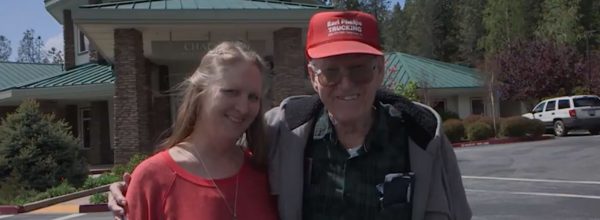In any given year, 3.6 million Americans miss at least one medical appointment because of transportation problems.
I discovered this startling fact while working on a yearlong project to address transportation barriers to health care, shortly before joining CCI. I learned that lack of transportation can cause patients to miss medical appointments, disrupting the continuity of care and delaying the delivery of necessary services. Additionally, missed medical appointments result in poor health outcomes for patients and increased costs to health care systems. There are several different strategies used to address the problem, including direct implementation of transportation services and offering health services in a community setting. But because health care providers are generally not in the business of providing transportation services themselves, one of the most compelling strategies has been to bring services to the patient rather than trying to bring the patient to the services.

This is where telehealth comes in. Telehealth, or “telemedicine,” is the use of digital and telecommunication technologies to deliver virtual medical, health, and education services. It can be used in a wide range of health care fields including dentistry, counseling, and chronic disease monitoring.
But what we’re most excited about is the opportunity to make access to specialty care and services — cardiology, dermatology, oncology, psychiatry, and more — more convenient. Telehealth holds the promise of increasing the volume of specialty care in community health settings. In the case of rural areas, it could help both patients and specialists avoid burdensome long-distance travel.
The problem is many health centers are unable to maintain robust telehealth programs without supplemental grant funding because telehealth is often not sufficiently reimbursed. This lack of sustainability hinders access to much-needed specialty care, especially for underserved patients in rural areas. So, while telehealth could increase access to specialists and cut costs, we still have not seen a widespread uptake in the safety net.
Here in California, we are trying to understand:
- What would a sustainable model of telehealth look like in the safety net?
- How can health plans supporting community clinics in offering telehealth to members?
- What staffing configuration is needed to optimize a telehealth program in a community clinic setting?
We’re not alone. A recent article on the Four Challenges of Launching a Telehealth Program outlines the similar obstacles identified by New York-Presbyterian: liability, licensure, reimbursement, and workflow.
We’re excited to be partnering with the California Health Care Foundation and the California Telehealth Resource Center to launch the new program Sustainable Models of Telehealth in the Safety Net, which aims to overcome these stumbling blocks. The program goals include:
- Expanding access to and use of specialty telehealth services among low-income Californians.
- Developing sustainable telehealth programs.
- Testing the hypothesis that a telehealth coordinator is essential to sustain a telehealth program.
We’re focusing on two applications of telehealth. One is live videoconfercing (synchronous) telehealth, where patients will intereact with their specialists in real time from their local community health center. The other is store-and-forward (asynchronous) telehealth, where primary care providers at local community health centers can consult with a specialist at a different location by sharing patient medical data (lab results, images, videos). Participating health centers will work toward increasing their volume of synchronous and asynchronous visits by 1,000 to 2,000 visits each year, supported by a commitment from their Medi-Cal managed care plan to reimburse for these services.
If you are interested in learning more about the program, write to me at alexis at careinnovtions dot org. And I’d love to hear your thoughts on how to make telehealth sustainable in the safety net.
Find this useful or interesting? We’re constantly sharing stuff like this. Sign up to receive our newsletter to stay in the loop.



